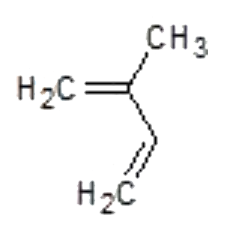An organic compound (A), C2H5NO2 gives on reduction another compound (B) C2H7N. The reaction of nitrous acid on (B) evolves nitrogen and gives another compound (C) C2H6O. The compound (C) on oxidation gives acetic acid. The compounds A, B, C are
Nitroethane, Ethylamine, Ethyl alcohol
Nitroethane, Dimethylamine, Ethyl alcohol
Nitroethane, Dimethylamine, Acetone
None
The correct Answer is:A
DIN_OBJ_CHM_V02_C08_E01_016
Topper's Solved these Questions
- CYANIDES, ISOCYANIDES, NITROCOMPOUNDS AND AMINESBOOK - DINESH PUBLICATIONCHAPTER - CYANIDES, ISOCYANIDES, NITROCOMPOUNDS AND AMINESEXERCISE - REVISION QUESTION
186 Videos
- CYANIDES, ISOCYANIDES, NITROCOMPOUNDS AND AMINESBOOK - DINESH PUBLICATIONCHAPTER - CYANIDES, ISOCYANIDES, NITROCOMPOUNDS AND AMINESEXERCISE - Selected Straight Objective Type MCQs
50 Videos
- CO-ORDINATION COMPOUNDS BOOK - DINESH PUBLICATIONCHAPTER - CO-ORDINATION COMPOUNDS EXERCISE - Brain storming multiple choice question
12 Videos
- D-AND -F BLOCK ELEMENTSBOOK - DINESH PUBLICATIONCHAPTER - D-AND -F BLOCK ELEMENTSEXERCISE - BRAIN STORMING MULTIPLE CHOICE QUESTIONS (MCQS)
13 Videos
Similar Questions
An organic compound (A) , C4H8Cl2 on hydrolysis forms another compound (B) , C4H8O.
If the compound (B) responds positively to iodo form test , then identify (A) and (B).
View SolutionAn organic compound (A) , C4H8Cl2 on hydrolysis forms another compound (B) , C4H8O.
If (B) does not responds to iodo form test , then identify possible structures of (A) and (B).
View Solution
Knowledge Check
The compound X(C3H6O) on oxidation gives a compound Y(C3H6O2) . The compound Y is
Apropanoic acidBbutyric acidCacetic acidDpropenoic acidAn organic compound (E)(C5H8), on hydrogenation gives a compound (F)(C5H12). Compound (E) on ozonolysis gives formaldehyde and 2−ketopropanal. Deduce the structure of the compouns (E).
A B
B C
C D
D
Compound A (ester ) reacts with LiAlH4 gives B and C. Compound B on oxidation gives acetic acid and compound C on oxidation gives formic acid. The compound 'A' is
AC2H5−COOCH3BCH3COOC2H5CCH3−COOCH3DCH3−CH2−COOH
An organic compound 'A'(C4H10O) is optically active. On mild oxidation, it gives a compound 'B'(C4H8O) but upon vigorous oxidation, it gives another compound 'C'(C3H6O2). The compound 'C' along with 'D' are also formed from 'B' by reacting with iodine in the presence of alkali. Deduce the structures of 'A','B','C' and 'D'.
View SolutionAn organic compound 'A'(C4H10O) is optically active. On mild oxidation, it gives a compound 'B'(C4H8O) but upon vigorous oxidation, it gives another compound 'C'(C3H6O2). The compound 'C' along with 'D' are also formed from 'B' by reacting with iodine in the presence of alkali. Deduce the structures of 'A','B','C' and 'D'.
View SolutionAn organic compound A of molecular formula C2H4 on reduction gives another compound B of molecular formula C2H6. B on reaction with chlorine in the presence of sunlight gives C of molecular formula C2H5Cl.
(a) name the compound A,B and C
(b) Write chemical equation for the conversion of A to B and name the type of reaction.
View SolutionAn organic compound A of molecular formula C2H4, on reduction gives another compound B of molecular formula C2H6 .B on reaction with chlorine in the presence of sunlight gives C of molecular formula C2H5CI .
The compounds A, B and Care:
View Solution
The compound F(C6H12O) on oxidative ozonolysis yirlds acetic acid and a compound (G) (C4H8O3). The new compound (G) on heating gives:
View Solution
